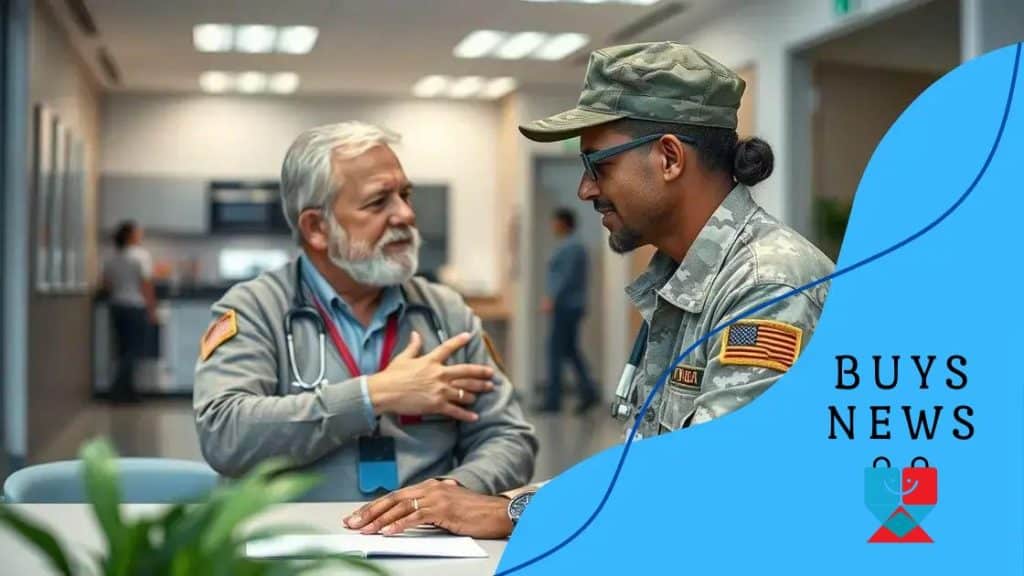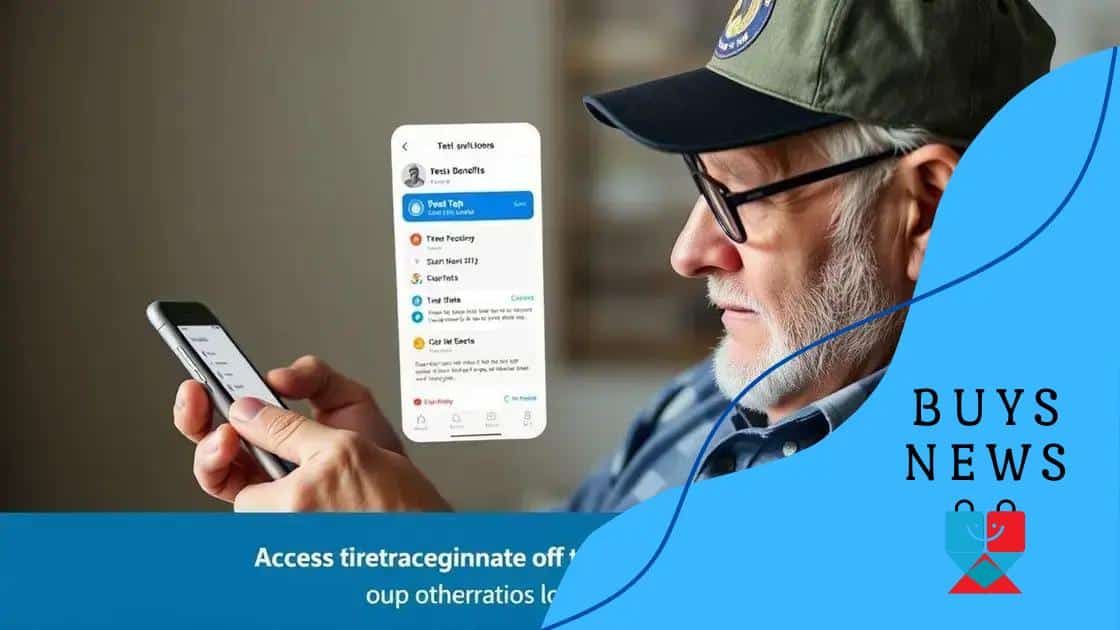Veterans’ benefits modernization: what you need to know

Veterans’ benefits modernization focuses on improving access and personalization of services through technology, ensuring timely support while emphasizing mental health resources for better veteran transition to civilian life.
Veterans’ benefits modernization is transforming how veterans receive support and resources. Have you wondered how these changes can enhance their quality of life? Let’s dive into the essential updates.
Understanding the need for benefits modernization
The need for benefits modernization for veterans has become increasingly clear. As our society evolves, so do the challenges that veterans face when accessing essential services. The transitioning population of veterans requires a responsive system that can adapt to their unique needs.
Challenges Faced by Veterans
Many veterans encounter obstacles such as outdated processes and insufficient resources. These challenges can hinder their access to vital benefits. By modernizing these systems, we can improve their experiences significantly.
- Long wait times for services
- Lack of awareness about available benefits
- Complex application processes
- Limited technological resources
As we look deeper into this issue, it’s clear that modernization isn’t just about incorporating technology; it’s about creating a more accessible framework. Veterans deserve a streamlined process that provides timely support.
Benefits of Modernizing Veteran Services
Enhancing these services can lead to profound benefits. For instance, employing technology can automate processes, speeding up access and minimizing errors.
- Improved accessibility through online platforms
- Enhanced communication between veterans and service providers
- Faster delivery of benefits
- Greater awareness of available support
In conclusion, understanding the need for benefits modernization is essential for ensuring veterans receive the support they deserve. By addressing their challenges and leveraging technology, we can create a brighter future for our veterans.
Key changes in veterans’ benefits
Recent changes in veterans’ benefits are making a significant impact on how veterans access services. These updates respond to evolving needs, ensuring that support is more effective and relevant.
Enhanced Access to Benefits
One major change is the introduction of online platforms that facilitate easier navigation of available services. Veterans can now apply for and manage benefits online, reducing the need for in-person visits and lengthy paperwork.
- Streamlined application processes
- Real-time updates on application status
- 24/7 access to resources
- Integration with other digital services
Additionally, there are more options for veterans to receive mental health support. Expanded telehealth services allow veterans to connect with counselors from the comfort of their homes.
Increased Financial Support
Financial help has also improved, with changes to funding that ensure higher monthly stipends for veterans. This increase helps ease the financial burden individuals may face.
- Higher housing allowances
- Expanded education benefits
- Increased access to healthcare funding
- Support for veterans transitioning to civilian workforce
The shift towards more holistic support systems demonstrates the commitment to improving the quality of life for our veterans. Enhanced communication channels also ensure that veterans stay informed about their benefits.
Technological Innovations
Technological advancements are crucial in these changes. The introduction of artificial intelligence in service delivery can help match veterans with the specific resources they need more efficiently.
- Personalized recommendations based on needs
- Improved data management for better analysis
- Enhanced security features for sensitive information
- Utilization of chatbots for quick inquiries
How modernization improves access

Modernization plays a vital role in improving access to veterans’ benefits. By leveraging technology, veterans can now access information and services more easily than ever before.
Streamlined Processes
One of the significant improvements is the streamlining of processes. Veterans can now apply for benefits online without the hassle of traditional paperwork. This shift allows for quicker resolutions and less confusion.
- Online application systems reduce waiting times.
- Automated notifications keep veterans informed.
- Clear guidelines help navigate the benefits system.
- Consistent updates enhance user experience.
The introduction of mobile applications further facilitates access. Veterans can manage their benefits on the go, making it easier to stay engaged with services.
Increased Awareness
Modernization also boosts awareness of available benefits. Digital outreach through social media and websites ensures veterans stay informed about new services and updates.
- Interactive webinars provide real-time information.
- Social media campaigns engage the community.
- Online forums offer peer support.
- Newsletters deliver updates straight to inboxes.
Such outreach helps to bridge the gap for veterans who may not know what resources are available. By improving communication channels, the system becomes more transparent and accessible.
Enhanced Customer Support
Additionally, modernized customer support options, such as chatbots and online chat services, offer real-time assistance. Veterans can receive help whenever they need it, reducing feelings of isolation.
- 24/7 availability for inquiries improves satisfaction.
- AI-driven resources can provide instant answers.
- Access to live agents for complex issues builds trust.
- Feedback systems help improve services continuously.
Impact of technology on veterans’ services
The impact of technology on veterans’ services has been profound. With the rise of digital tools, veterans can now access support in ways that were not possible before.
Improved Communication
Technology has enhanced communication between veterans and service providers. Veterans can reach out for assistance through various digital platforms, making it easier to get help.
- Online chats provide immediate support.
- Social media keeps veterans updated on benefits.
- Email communications allow for easy interactions.
- Mobile applications enhance tracking of services.
This improvements ensures that veterans are never left in the dark about their available options.
Enhanced Accessibility
Another significant benefit is the improved accessibility to services. Many organizations now offer online applications, allowing veterans to apply for benefits without having to visit an office. This shift saves time and reduces stress.
- Virtual appointments eliminate travel constraints.
- Self-service portals make it easier to manage benefits.
- Information is available at any hour, making it convenient.
- Support resources can be accessed from anywhere.
With these advancements, veterans can receive the help they need without the barriers that previously existed.
Data-Driven Insights
Technology also allows for better data collection and analysis. By using data, organizations can tailor services to meet the specific needs of veterans. This ensures that programs are relevant and effective.
- Customization of services based on demographics.
- Tracking trends to identify emerging needs.
- Assessing program effectiveness for continuous improvement.
- Utilization of feedback for better service delivery.
Future trends in veterans’ benefits
Future trends in veterans’ benefits are set to shape how support is provided in years to come. As technology evolves, so do the expectations and needs of veterans.
Greater Personalization
One key trend is the move toward personalized services. Veterans will receive tailored benefits based on their unique circumstances and preferences. This approach ensures that each veteran gets the support they specifically need.
- Customized health care plans based on medical history.
- Individual education benefits to match career goals.
- Flexible housing assistance that adapts to location and needs.
- Personalized outreach programs for better engagement.
This trend emphasizes that one size does not fit all when it comes to supporting our veterans.
Increased Use of Artificial Intelligence
The use of artificial intelligence (AI) will play a major role in the future of veterans’ services. AI can help streamline processes and provide better resource matching.
- Chatbots for immediate assistance and inquiry responses.
- Data analysis tools to identify trends and gaps.
- Automation of application processing to reduce wait times.
- AI-driven decision support tools for claims processing.
This will enhance efficiency and improve overall service delivery for veterans.
Focus on Mental Health
The future will also see a strong emphasis on mental health support. As awareness grows, more resources will be allocated to mental health programs. Innovative solutions will emerge to provide immediate support.
- Expanded access to telehealth services for mental well-being.
- Integration of wellness programs into benefits offerings.
- Peer support networks facilitated through technology.
- Increased funding for mental health research specific to veterans.
As these trends unfold, they will create a more responsive and supportive environment for our veterans, ensuring they receive the benefits they deserve.
FAQ – Frequently Asked Questions about Veterans’ Benefits Modernization
How does technology improve access to veterans’ benefits?
Technology streamlines application processes, enhances communication, and provides 24/7 access to resources, allowing veterans to manage their benefits more efficiently.
What are the key trends in veterans’ benefits mentioned?
Key trends include personalization of services, increased use of artificial intelligence, a focus on mental health support, and improved accessibility through digital platforms.
Why is mental health support emphasized in veterans’ services?
Mental health support is crucial for helping veterans transition to civilian life and cope with challenges. Increased funding and innovative solutions allow for better access to mental health resources.
How can veterans stay informed about their benefits?
Veterans can stay informed through online platforms, webinars, social media updates, and newsletters that provide timely information on available services and benefits.





